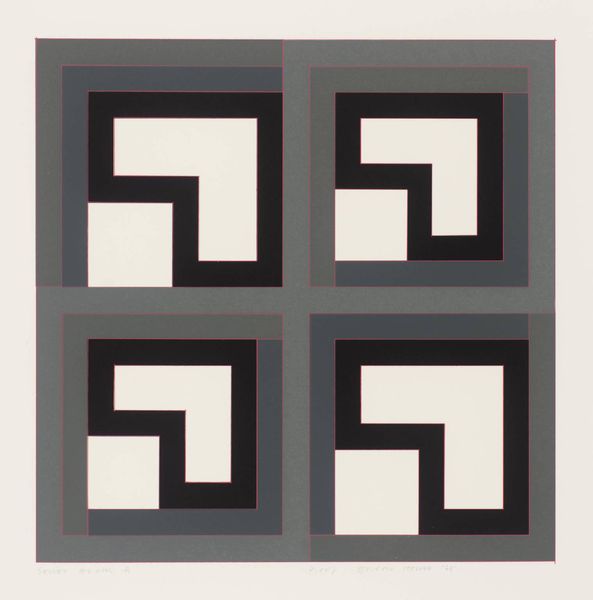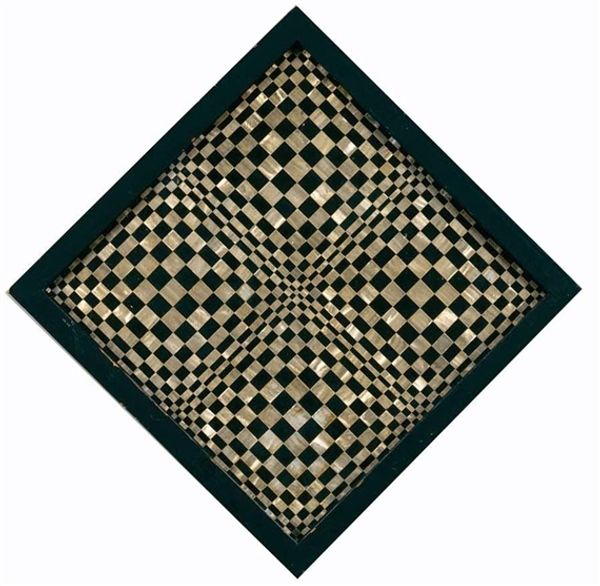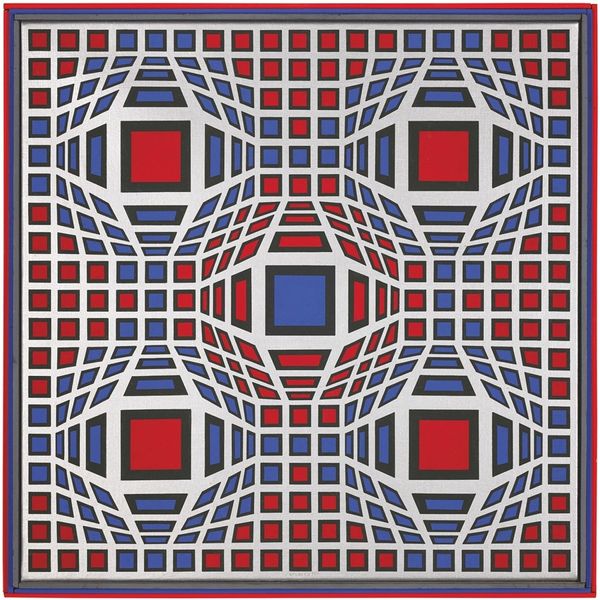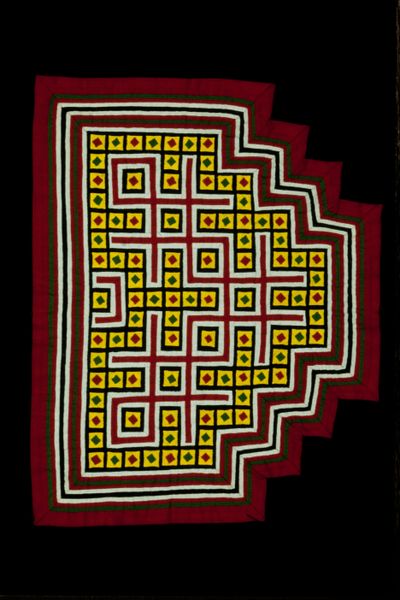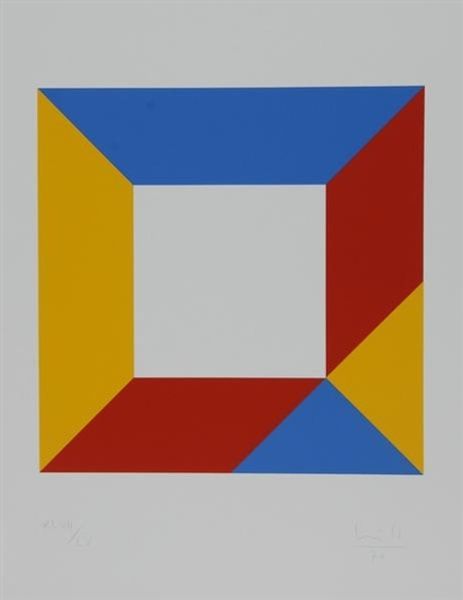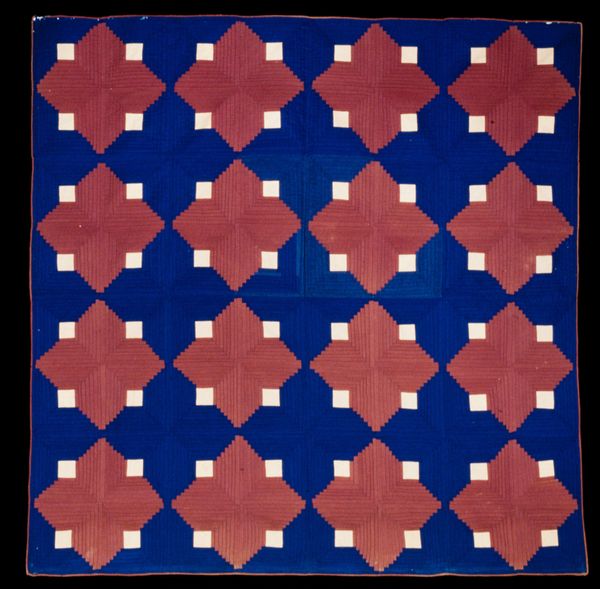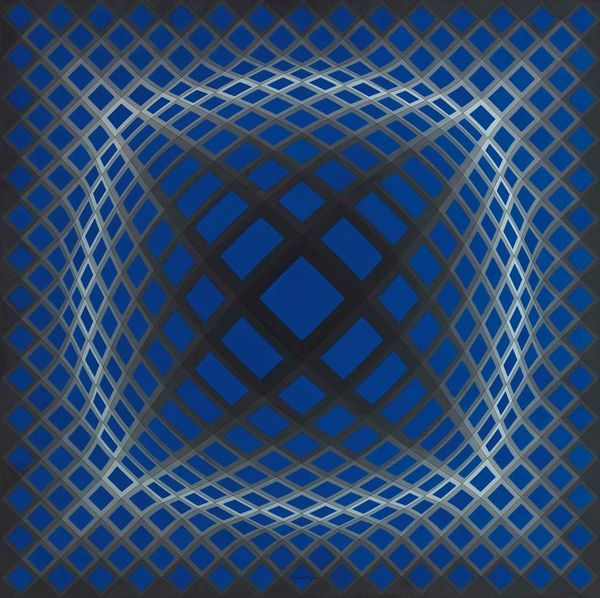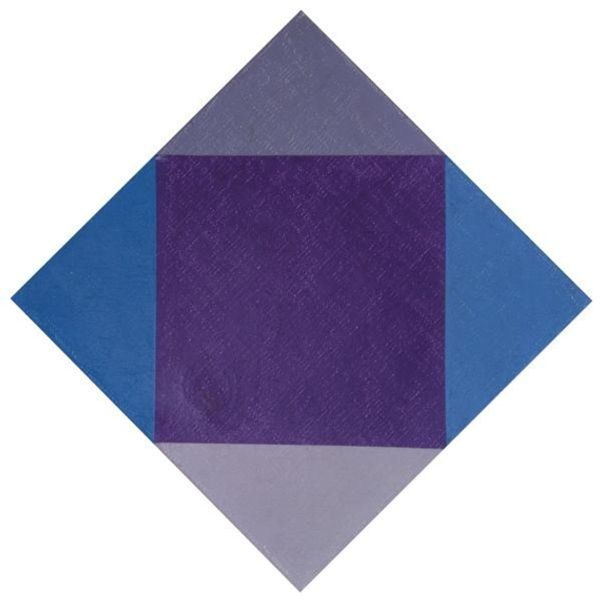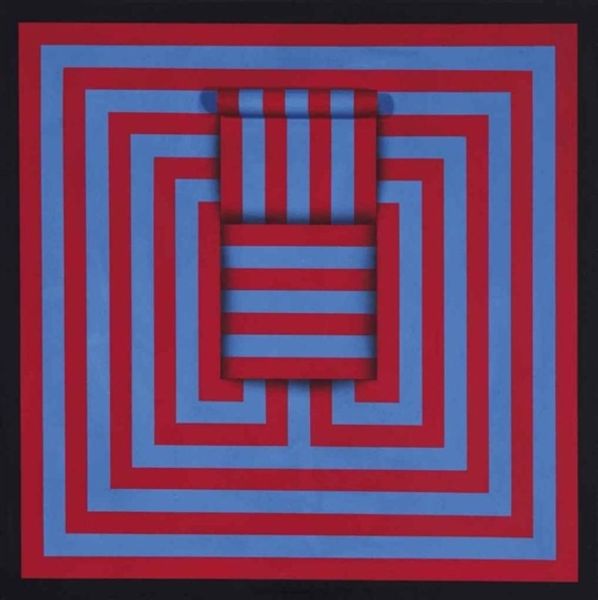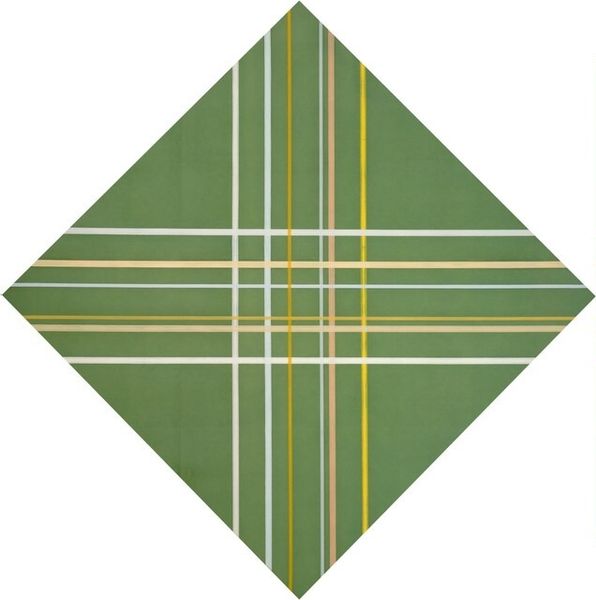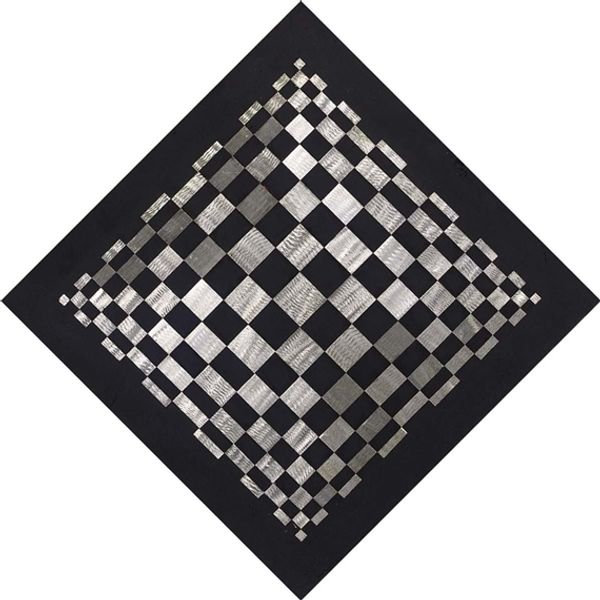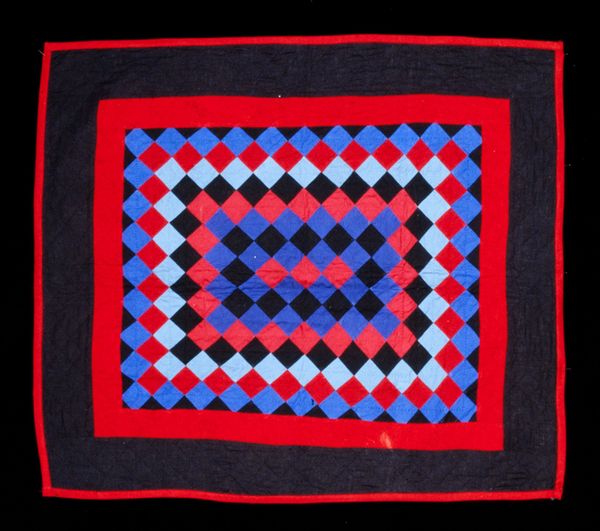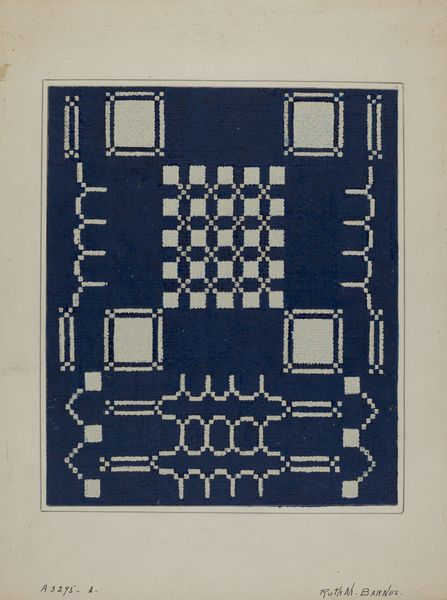
acrylic-paint
#
op-art
#
pattern
#
acrylic-paint
#
geometric pattern
#
abstract pattern
#
repetitive shape and pattern
#
minimal pattern
#
geometric
#
geometric-abstraction
#
repetition of pattern
#
vertical pattern
#
abstraction
#
regular pattern
#
pattern repetition
#
layered pattern
#
modernism
#
repetitive pattern
#
orange
Copyright: Omar Rayo,Fair Use
Curator: We are standing before Omar Rayo's "Mur-Mur," a striking acrylic on canvas piece from 1968. Editor: It's immediately captivating! The repeating forms and colors vibrate in a way that’s simultaneously unsettling and attractive. I’m curious about what creates this effect. Curator: I think it stems from Rayo’s mastery of Op Art techniques. The precise geometry and interplay of color trick the eye, creating the illusion of movement and depth where there is only a flat surface. Editor: Indeed. But beyond the technical aspects, I read its title, "Mur-Mur," and immediately interpret this through a feminist lens as a quiet subversion or protest. What socio-political issues was Rayo engaged with at the time? How can we understand his piece as a commentary on the tumultuous events of '68? Curator: Those connections may be more tenuous here, actually. In Rayo’s practice, he seems focused on perceptual experience rather than social commentary. Notice how the edges are crisp and clean and how the composition relies almost solely on geometric form. We might analyze how the positive and negative space creates rhythm, reflecting a universal order. Editor: But reducing art to pure formalism ignores its capacity for conveying layered meaning. We cannot extract Rayo, a Latin American artist, from a history of colonialism, power dynamics, or from broader decolonization narratives of the era. Do you really think that abstraction can exist completely independently? Curator: I'm suggesting we first appreciate its aesthetic qualities, the deliberate manipulation of space and line, before layering on secondary meanings that may or may not align with the artist's intent. This composition compels the viewer to engage actively with the image to see it differently. Editor: Right, but the effect isn’t just about passive visual engagement, it also invites interrogation: Who are we as viewers? From what location do we assess it? Who does it invite? And who gets erased within this so-called aesthetic universality? Curator: Well, it offers us a lens to re-evaluate how we look. How do we read form and meaning? What counts as art and, maybe more importantly, why? Editor: Perhaps in the discomfort this pattern provokes, there can be generative possibilities—not merely in the artwork itself but in ourselves, the way we navigate this constantly complex world.
Comments
No comments
Be the first to comment and join the conversation on the ultimate creative platform.
